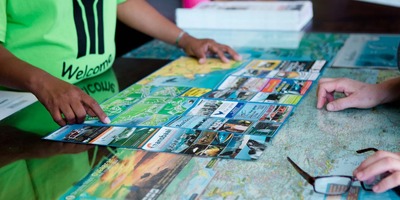Select a category
History of Kleinmond
The strandlopers left evidence of fish traps and kitchen middens that prove that these coastal dwellers were possibly the earliest inhabitants. This significant evidence was found in mountain caves along the beaches between Kleinmond and Hawston.
Little known to some, the Kogelberg mountains had a great hand to play in shaping the history of the Hangklip-Kleinmond area. The seemingly impenetrable mountains served as a barrier when the rest of the Cape was being colonised. It served as a hiding spot for many runaway slaves, criminals and the remnants of the Khoisan tribes.
Besides the few outcasts, Andries Grove was granted a grazing farm here in 1739. However, the area remained very much uninhabited and so the wildlife was plentiful. This in turn lead to William Paterson becoming well-known for his expedition from Somerset West to Bot River when he documented the wildlife. According to his tales plenty hyena, bontebok, buffalo, zebra and eland roamed freely in the area.
In the mid-1800s the Kleinmond area saw its first sign of community when a small fishing community took up residence at Jogensklip, which today is the small fishing harbour in Kleinmond. It was soon after this that the area became a well-known holiday spot. Farmers from as far as Caledon and the surrounding area would embark on an annual pilgrimage to camp at the Palmiet lagoon or Klein Bot River mouth.
A signature tree dubbed 'Die Preekboom' can be found on the lawns at the Kleinmond Lagoon and since 1902 it has been the meeting point for church services. Today church services are still held there during the festive season at the end of the year.
The Hangklip area fell under the original Lamloch Farm, which was subdivided and the land that laid out the present town of Kleinmond was bought by the Kaplan brothers in 1910. During WWII Italian prisoners of war worked on the road from Gordon's Bay to this remote part of the Western Cape. Kleinmond and the surrounding towns of Betty's Bay, Pringle Bay and Rooi Els soon began developing at a gradual pace and in 1948 the first Village Management Board was established. In 1954 the harbour area was declared an industrial area and the fishermen who had their homes there were then moved higher up along the mountain. The development and infrastructure only took off in 1966 when tar roads, a town hall, municipal offices and a library were built.
Today the towns are well established as holiday and retirement destinations. There are a myriad of things to do and places to stay that make this an incredible holiday destination. However, it is also developing itself as a place for new and varied businesses to take off.
























